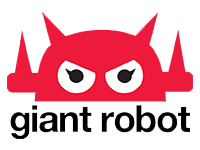Art has the power to provoke ideas and inflame passions. Politics and art, in this way, go hand in hand. When an event of historical magnitude occurs, it’s only a matter of time before an artist emerges and addresses it. Prime Minister Shinzo Abe’s economic plan (Abenomics) as the story of the hour in news circles, it’s easy to forget that Japan endured a nuclear catastrophe just 2 years ago. In March 2011, the Tokyo Electric Power Company’s Fukushima Daiichi Nuclear Power Plant underwent a partial meltdown from the 3.11 Earthquake and Tsunami. Approximately 157,000 residents were forced to flee their homes due to radioactive contamination in Fukushima prefecture with little hope of ever returning. Critics blamed the disaster on negligence and incompetency concerning safety regulations willingly overlooked by TEPCO and the Japanese government. Flash-forward to today and the public carries on as if it’s business as usual. The earthquake, tsunami, or even Fukushima rarely comes up in casual conversations. On the surface, it appears that the populace and Japanese government have forgotten the disaster altogether. One artist hasn’t. The man calling himself 281_Anti Nuke designed stickers, posters, and indiscreetly plastered them throughout Tokyo. His most recognizable piece is a small girl in a slicker with “I hate rain” printed beneath. It isn’t until you glimpse a nuclear trefoil inscribed beneath the text that its message dawns on you and all the events broadcasted from yesteryear return to you in a flood of regret. His ‘mock’ propaganda is a sharp–albeit intrusive– reminder of the gravity of what happened in Fukushima not so long ago. It’s a tragedy that he claims the government created. It’s a tragedy that he believes they coerced the public to forget. Giant Robot Magazine previously reported sightings of his art in October 2011. Back then, information on 281 was scarce. Two years later, major outlets like The Economist, Financial Times, and Wall Street Journal have featured photos of his art in articles about national politics. Others like Japan Rolling Stones, Channel 24, and The Japan Times have even interviewed the enigmatic artist himself. Besides his distrust of the Japanese government and his drive to hold them accountable, almost no one knows anything about 281′s personal life–let alone his actual name. The retrospective at the Pink Cow bar in Roppongi on June 6th, 2013, was held to raise awareness of his work and offer a little more insight into the artist himself. The retrospective hosted a preview screening of filmmaker/photographer Adrian Storey’s self-titled documentary about 281. Storey formerly featured some of 281′s designs in a segment that he submitted for Ridley Scott’s Japan in a Day documentary. 281 contacted Storey and requested permission to use the images from Japan in a Day for his own personal website. Story agreed on the condition that 281 consent to be the subject of the aforementioned self-titled documentary. Filming began in January of this year. Stroey’s documentary not only depicted the platform for 281’s opposition to the corruption of Japanese politicians and nuclear industry, but...
Continue reading




